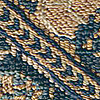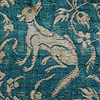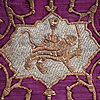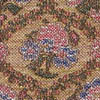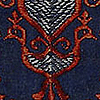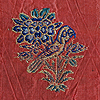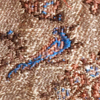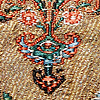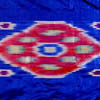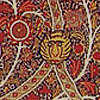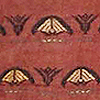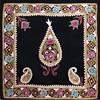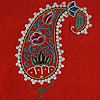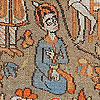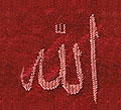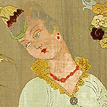 |
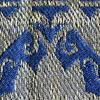
2132
Antique Persian Textile. Silk Brocade with Silver thread
Safavi Dynasty
1501-1722 A.D Circa 1550
Size 20" x 12"
Size 51 x 30cm
Top & Below Images are Details
Cf. Riefstahl, Persian and Indian Textiles N.Y. 1923 XX no.98
This textile was on display in the Chelsea Art
Museum in the exhibition Italian Arabia from Dec 9 2008 until
Feb/ 25/ 2009 It is published in the exhibition catalogue pg,
83
Below is picture of similar textile at Philadelphia Museum of Art
Mariano Fortuny loves Persian textile he copy this design. Below are few pictures of Persian jacked he made in 1900
Persian Textile
History

|
 Early 16th Century Safavi Silk Brocade Textile
Early 16th Century Safavi Silk Brocade Textile

Mariano Fortuny (1871-1949)
Mariano Fortuny was born in 1871 in the city of Granada, Spain. After his father's death in 1874, the family moved to Paris a year later. Fortuny studied physics and chemistry in Germany. In 1890 he moved to Venice permanently, where he lived and worked most of his life.
Fortuny was an artistic genius with an insurmountable curiosity, that led him to pursue various venues and interests all interconnected with the arts. He was as a painter; turned into etching, sculpture, photography, lighting design, theatre direction, set design, architecture, and costume design, and ultimately the creator of extraordinary fabrics and garments.
In 1892 he developed a revolutionary, indirect lighting system that transformed bulky stage scenery and obsolete gas lamps, thus, drastically changing the atmosphere onstage. His first theatrical costume was a figure-enveloping, border-printed scarf, titled the Knossos. Isadora Duncan was the first to wear the Knossos scarf. This invention proved to be Fortuny’s initiation to the world of fashion.
His knowledge in painting allowed him to experiment with subtle colors creating one-of-a-kind silks and velvets from which he made exquisite gowns. The velvet he used in dresses, jackets, capes, and cloaks to cover his trademark “Delphos” gown; as well as home furnishings. His Delphos gown, was made of pleated silk, simply cut, and hung loosely from the shoulders. It was finished with small Venetian glass beads which had a dual purpose: not only did the beads serve as ornamentation, but also weighed the dress down, allowing it to cling to the contours of the body. He patented and registered his own pleating device in 1909. Between 1901 and 1933 he registered twenty-two patents, all related to garments and printing methods.
Mario Fortuny's elegance, simplicity and passion in his fashion design has made his clothes timeless works of art. Mariano Fortuny died in Venice on May 2, 1949.
|  |
